How to Showcase Artwork in Your Living Room
Decorating your living room is a matter of the heart, and incorporating artwork is a wonderful way to add a personal touch to your space. Art can highlight the character of your living room, set striking accents, and create an atmosphere that leaves guests amazed. But how do you choose the right artwork and position it optimally? Here are some useful tips and tricks.
Why Add Artwork to Your Living Room?
Artwork is more than just wall décor. It tells stories, inspires, and adds color to your life. A well-chosen piece of art can completely change the mood of a room. Artwork also reflects your personality and taste, making your living room even more welcoming and unique.





Finding the Right Art for Your Living Room
Identify Your Style
Before searching for artwork, it’s essential to understand your own style. Do you prefer modern, abstract art, or are you drawn to classic paintings? Your personal taste should always be the priority because, ultimately, your living room should make you feel at home.



Colors and Themes
The colors and themes of your living room are key factors when selecting artwork. Have a vibrant, colorful living room? Monochromatic or more subtle artwork might provide a nice contrast. In a neutral space, bold and striking pieces can serve as captivating focal points.
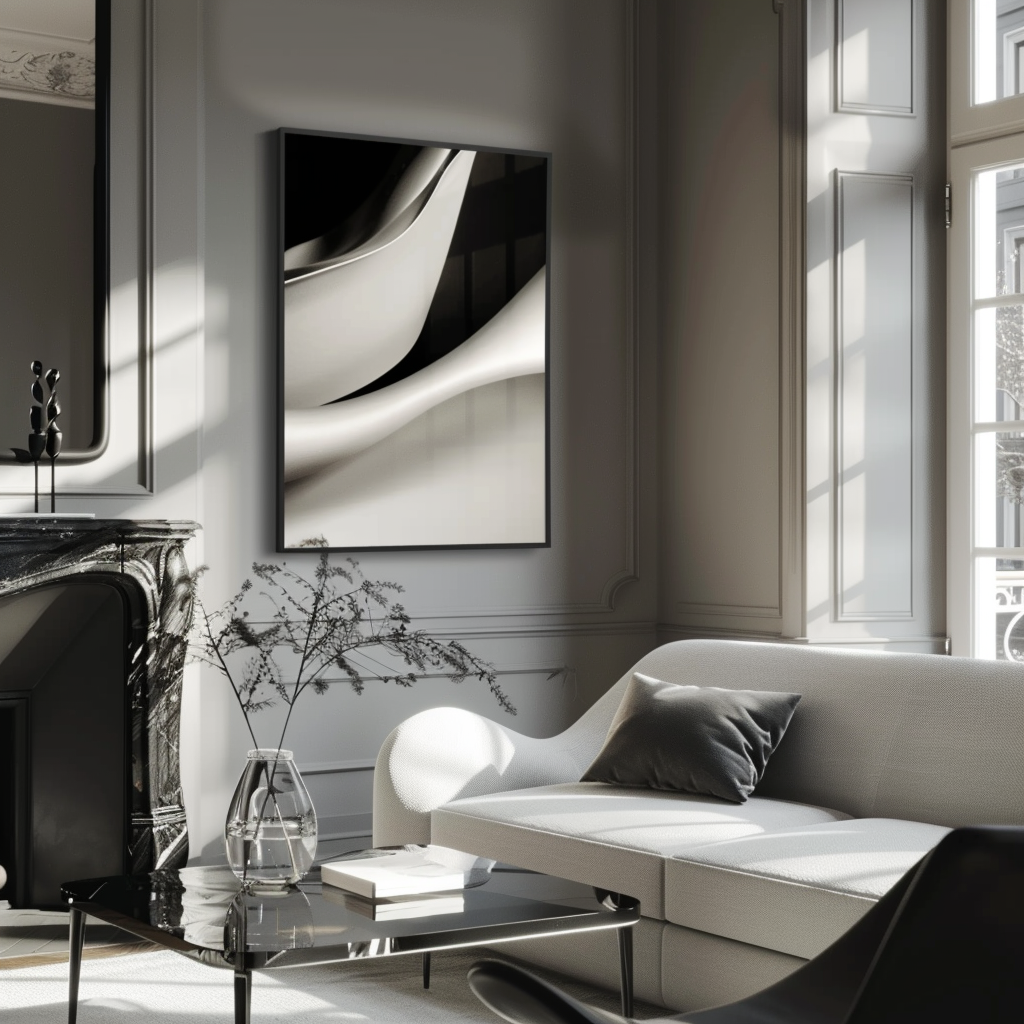

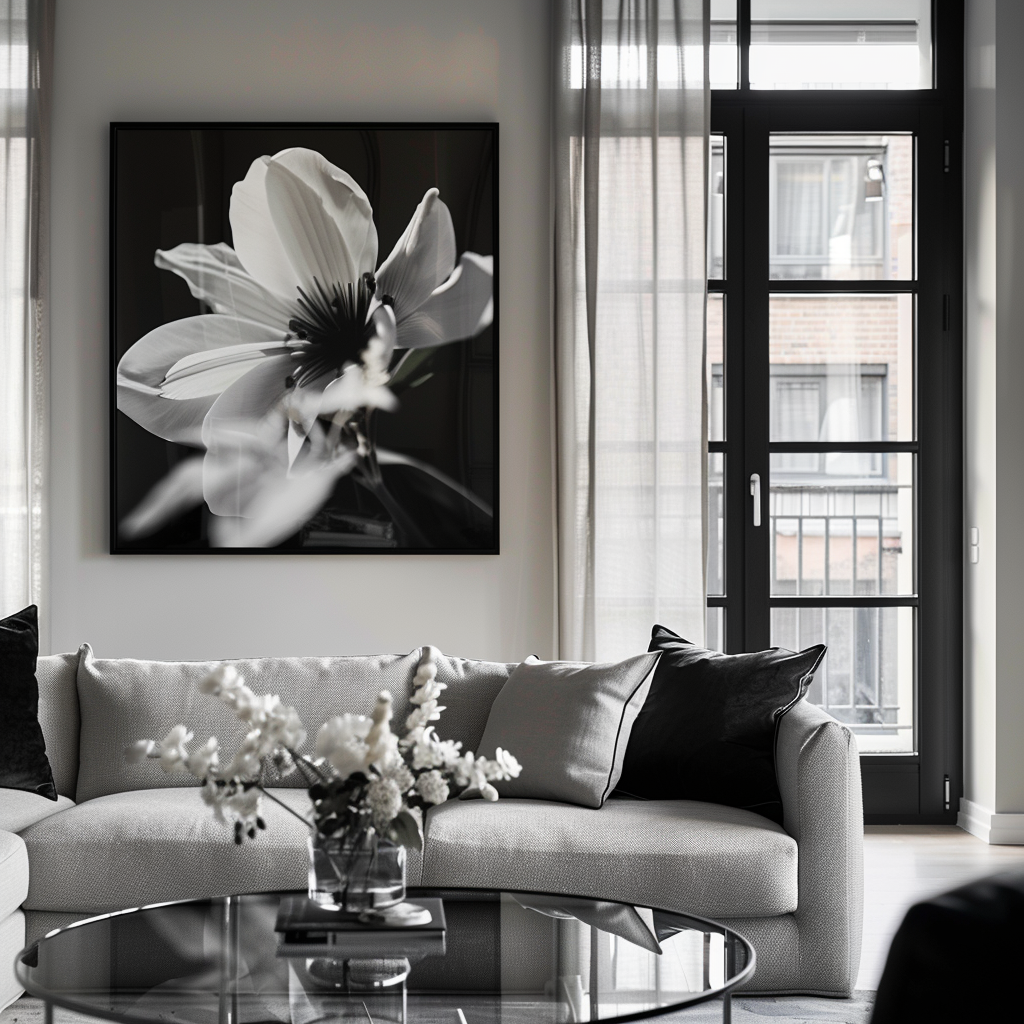
Formats and Sizes
The size of the artwork matters just as much. A small piece can get lost on a large wall, while an oversized piece might overwhelm the room. Consider whether you prefer one large statement piece or a combination of smaller pieces. Gallery walls, for example, are a popular way to create a harmonious arrangement of multiple artworks.

Positioning Artwork in the Living Room
Mind the Eye Level
A basic rule is to hang artwork at eye level, meaning the center of the piece should be approximately 150–160 cm (59–63 inches) from the floor. This ensures the artwork is in your natural line of sight and can be fully appreciated.




Proportions and Symmetry
Ensure the artwork is proportional to the wall and the furniture below it. For instance, a piece above a sofa or sideboard should ideally take up about two-thirds of the furniture’s width. Symmetry can create a sense of calm and harmony, while asymmetrical arrangements bring dynamism and excitement.




Make Use of Lighting
Lighting plays a critical role in showcasing artwork. Natural light can make colors pop, while artificial light can highlight specific areas. Consider using spotlights or picture lights to make your pieces stand out.

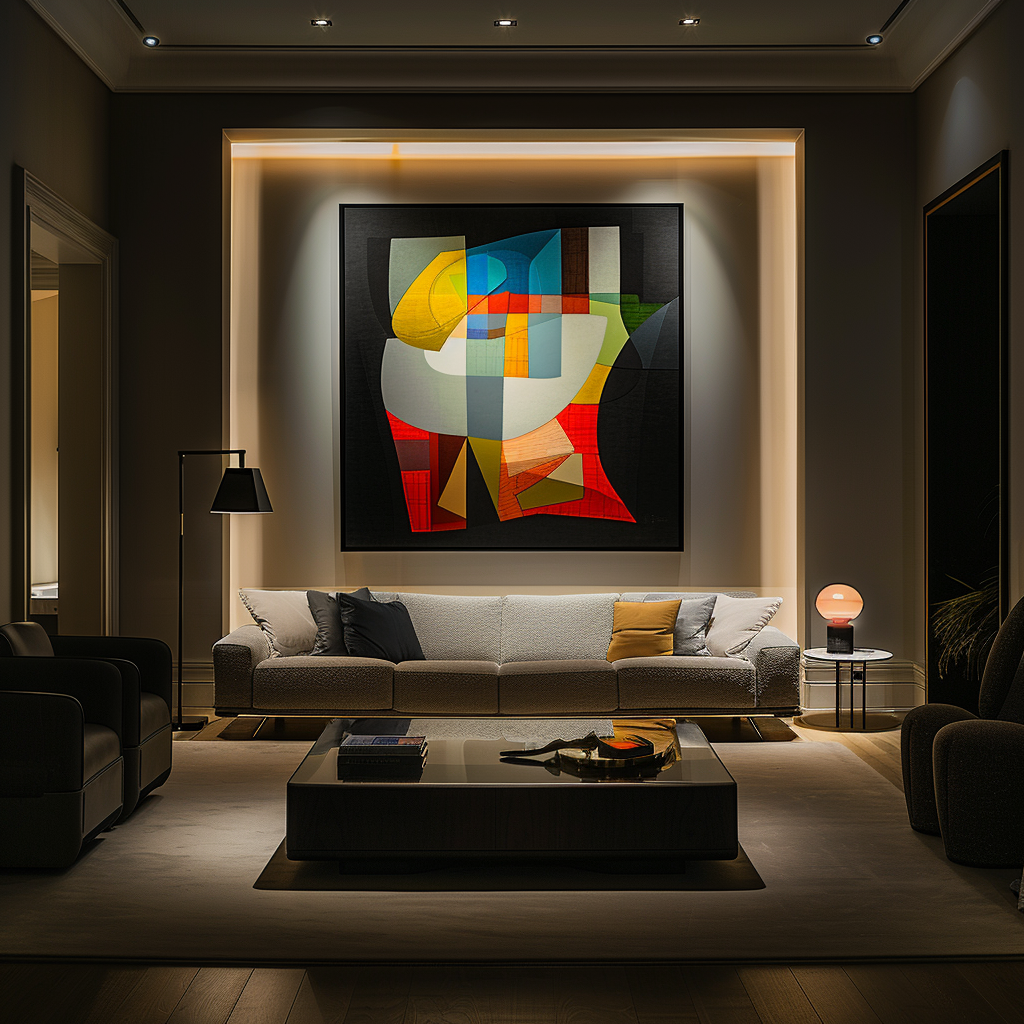


Artwork as Part of Living Room Design
Combine Art with Furniture
Artwork shouldn’t feel isolated but rather integrated into the rest of the décor. Ensure the colors and styles of your artwork complement your furniture and accessories. For instance, a painting above the sofa can reflect the hues of the cushions, or a wall piece might echo a shade in your rug.



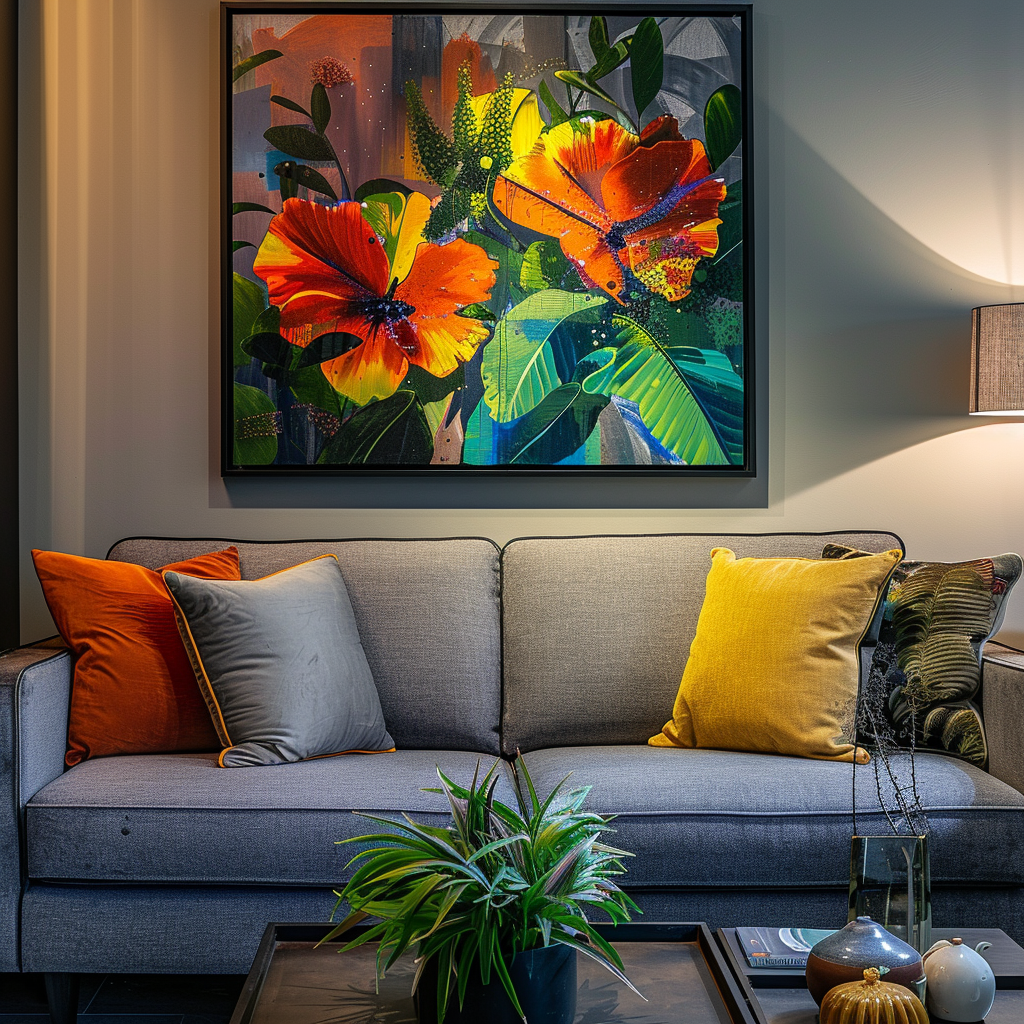
Define Spaces
Artwork can also be used to define different areas in the living room. A large painting can help separate the dining area from the lounge, or a striking piece can make a reading nook feel extra cozy.




Rotate Exhibitions
To keep your living room feeling fresh, consider swapping out artwork regularly. This not only revitalizes the space but also allows you to incorporate seasonal accents. You could display lighter, brighter pieces in summer and deeper, richer tones in winter.


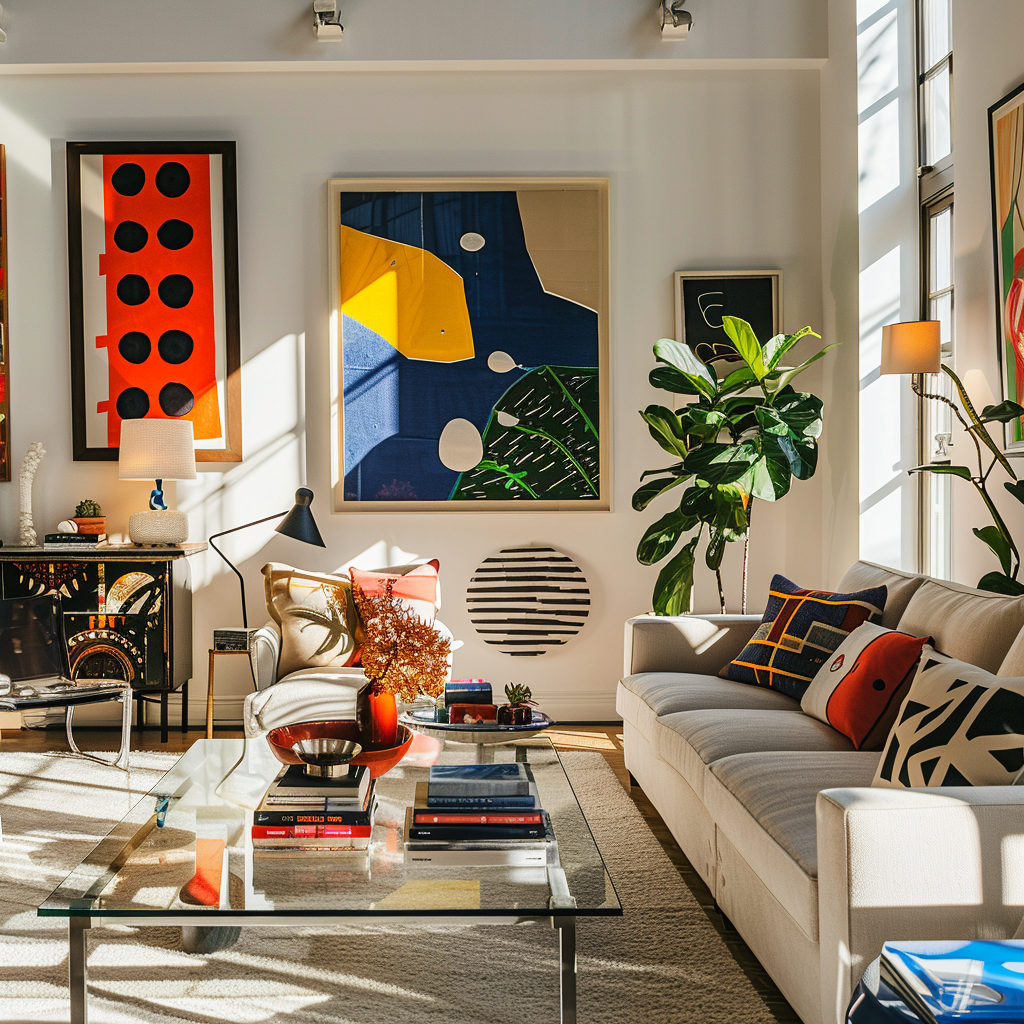

Artwork as a Conversation Starter
Artwork is a fantastic conversation piece. Whether it’s abstract paintings or stunning photography, every piece has a story to tell, giving you something to share with your guests. It fosters an inviting atmosphere and demonstrates your eye for unique details.



FAQs: Living Room Décor with Artwork
How do I find the right spot for artwork?
The ideal spot depends on factors like eye level, proportions relative to the wall and furniture, and lighting conditions. Don’t hesitate to experiment with different placements until you find the perfect fit.
Should I use frames or hang artwork unframed?
This is a matter of preference. Frames can add emphasis and an elegant finish to a piece, while unframed artwork offers a more modern and minimalist aesthetic.
How can I create a gallery wall?
A gallery wall consists of multiple pieces that work well together. Choose pieces with similar colors, styles, or themes. Lay out the arrangement on the floor first to plan the composition before hanging them on the wall.
How should I light artwork?
Use natural light wherever possible, and supplement it with artificial lighting like picture lights or spotlights aimed at the artwork. Avoid direct sunlight, which can cause fading.
How do I care for my artwork?
Dust artwork regularly with a soft cloth. Avoid using harsh cleaning products, and keep it away from direct sunlight and high humidity.
Which art styles go well together?
This depends on your taste. Modern art pairs well with minimalist décor, while classic paintings complement traditional furniture. Don’t be afraid to mix styles to create interesting contrasts.
Conclusion
Artwork can give your living room a personal touch, creating a harmonious and inviting atmosphere. Choose pieces that reflect your style and coordinate with your décor, and pay attention to thoughtful placement. With these tips, your living room will become a stunning space that delights guests and inspires you daily.
Artwork adds personal accents. For more inspiration, check out Boho Living Room Décor ideas. For creative DIY projects, explore DIY Living Room Décor Projects. And for stylish lighting, don’t miss our Living Room Lighting Ideas.
- Modern Balcony Decor: Ideas and Inspiration for a Stylish Oasis – 17. December 2024
- Kitchen Wall Decor Ideas: Creatively Transform Your Kitchen – 17. December 2024
- Balcony and Terrace Lighting Ideas: Create the Perfect Atmosphere – 17. December 2024











0 Comments